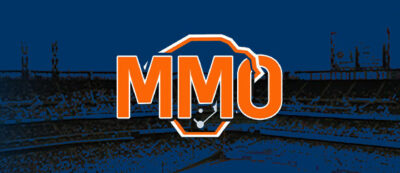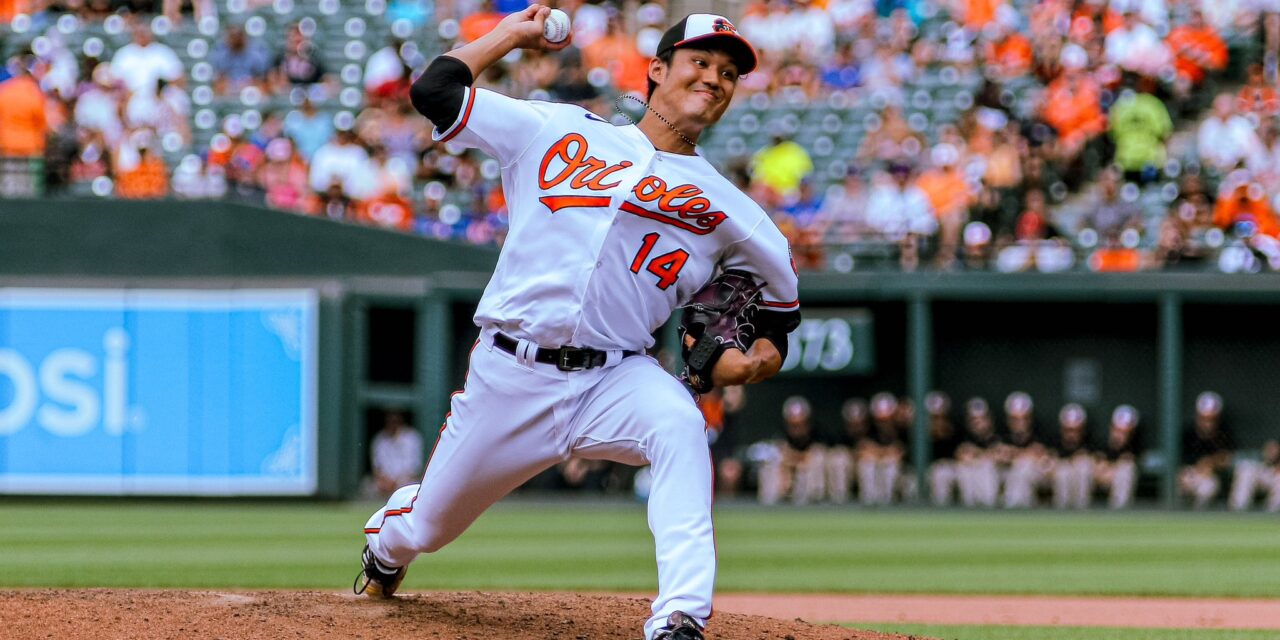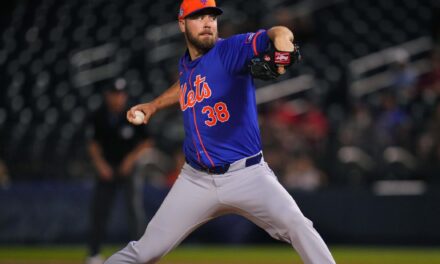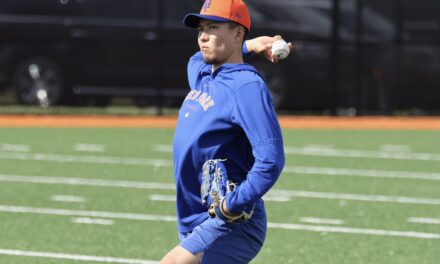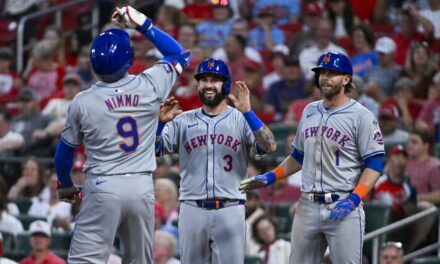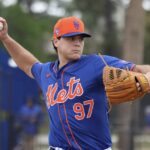David Stearns and the Mets were busy last week.
The organization rehauled the bullpen for the upcoming season, re-signing Adam Ottavino on Jan. 31, and inking free agents Jake Diekman and Shintaro Fujinami on Feb. 2.
These three signings marked serious investments toward the bullpen for next season. Before, Stearns had made 13 smaller moves that didn’t move the needle, but instead fit the narrative of projects. Those signings included signing Andre Scrubb to a minor league deal and acquiring Yohan Ramírez from the White Sox.
Now, with the Mets bullpen updated further, here is another look at the depth chart for the 2024 season.
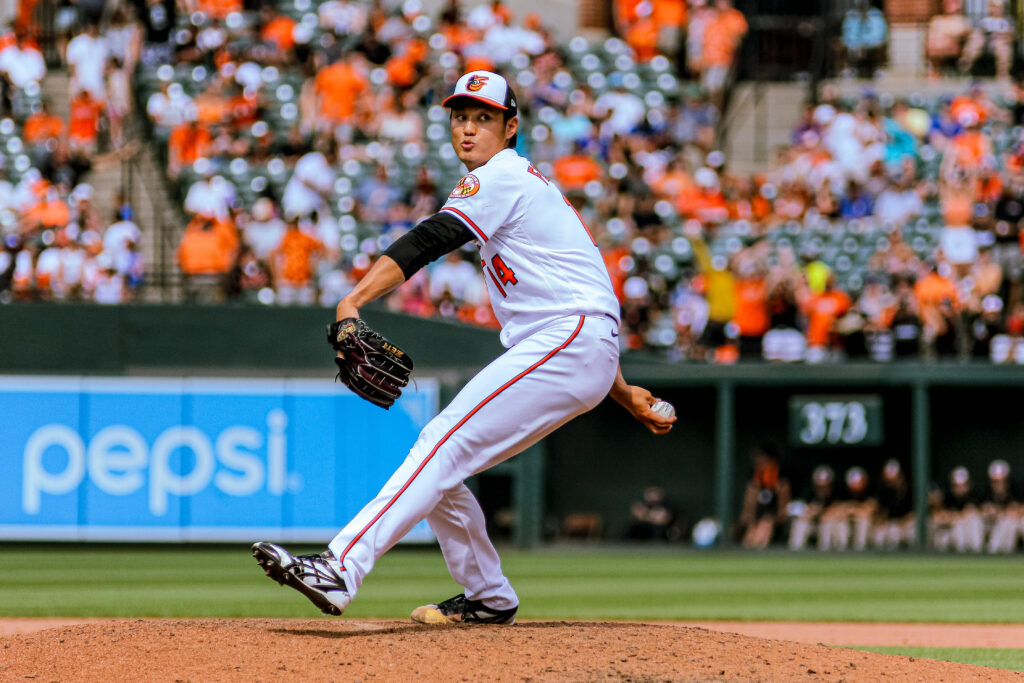
Photo by Roberto Carlo
The Back-End
The back end of the bullpen will be secured by familiar names in 2024.
Edwin Díaz returns to the closer role after missing the entire 2023 season with a knee injury. The righty had a 1.31 ERA and 17.1 K/9 in 2022 and will surely boost a Mets bullpen that struggled last season.
Brooks Raley, Ottavino, and Diekman will get their shares of late innings as well. Ottavino recently re-signed after opting out of his contract this offseason, while Raley returns after a successful first season in Queens, where he pitched to a 2.80 ERA in 54 2/3 innings.
Diekman could also get his chance in the eighth and seventh innings. The lefty struggled last season with the White Sox but pitched to a 2.18 ERA in 45 1/3 innings after being traded mid-season to the Rays.
Middle Relief
Drew Smith, Phil Bickford, and some new signees are the next in line for the Mets.
Smith regressed a little last season. Both his K/9 (9.6) and HR/9 (1.1) were lower from the year before, and the righty recorded a 4.15 ERA in 56 1/3 innings. Last season Smith had a chance to solidify himself as a late-inning arm and didn’t perform.
Bickford joins the Mets for a second season after an okay first stint. The former Dodger lowered his walks per nine to 4.6 with the Mets and pitched 25 1/3 innings for the team in 2023, but still didn’t return to his 2021 form, where he recorded a 2.80 ERA. Bickford should slot into the fifth or sixth inning if needed, or maybe earlier if the Mets go with an opener.
Fujinami and Jorge López are both in somewhat similar roles. The two right-handers both throw in the upper 90s, with Fujinami reaching 100, but both struggled with base runners and high exit velocities. If either one can lower their WHIP and maintain their high strikeout numbers, the Mets could have another late-inning arm on their hands.
Long Relief
The long relief options that follow in the Mets bullpen are all respectable options with starting experience.
Michael Tonkin is at the top of the list for long-relief options. The Mets signed him to a one-year, $1 million deal after he recorded a 4.28 ERA in 80 innings last year with the Braves. Tonkin’s slider is his plus pitch, which held batters to a .196 batting average and 30.3 whiff percentage.
The next two that follow are Joey Lucchesi and Sean Reid-Foley. Lucchesi was excellent last season, pitching to a 2.89 ERA in nine spot starts. He might have made a case for the rotation, but multiple additions to the rotation this offseason will keep him in the bullpen unless an injury arises.
Meanwhile, Reid-Foley will likely assume his clean-up role when the Mets are behind. The righty showed glimpses in 2021 and 2022, but still recorded ERAs north of five in each season. Reid-Foley also missed the majority of 2023 with Tommy John, which stunted his development and chance to escape the long-relief role.
Projects
Earlier this offseason, Stearns added three names to the bullpen that could evolve into difference-makers in 2024.
The name that headlines them all is Max Kranick. The right-hander was drafted out of high school by Pittsburgh in 2016 and displayed his velocity in the minors. His fastball touched 97-99 miles per hour, which he paired with a plus slider to put away batters. Despite impressive stuff, Kranick recorded subpar strikeout numbers and didn’t reach the majors until 2021.
Kranick could evolve in many ways for the Mets. Management could focus on his four-seam and slider combo, turning Kranick into a one-inning reliever in middle-relief situations. Stearns could also turn the righty into a long man. The Brewers were known for using relievers in unorthodox ways during Stearns’ tenure, and Kranick could team up with new Met Adrian Houser to get the ball to the back end of the bullpen.
The more traditional relievers on this list are Austin Adams and Ramírez. Adams is a slider-first pitcher who mixes in a four-seam fastball up in the zone to keep batters honest. While he boasts a strong 13.4 K/9 in his career, he also gets outs on the ground and recorded a 39.1 groundball percentage in 2023. Adams recorded a 5.71 ERA in 17 1/3 innings last year but also recorded a 3.72 FIP and 3.55 xERA. A strong Mets infield could reverse some of Adams’s misfortunes.
Ramírez’s arsenal is similar to Adams’s. The former White Sox primarily throws a sweeper and mixes in a mid-90s fastball. He was solid for the Pirates in 2023, recording a 3.67 ERA and 60% groundball rate in 34 1/3 innings, but had his season numbers ballooned by allowing four earned runs in four innings with the White Sox.
Potential Contributors
Forgotten in the Mets signings this offseason are the up-and-coming arms in their system.
Bryce Montes de Oca leads this group after missing the entire 2023 due to a second Tommy John surgery. The Kansas native debuted his 100-mile-per-hour sinker in 2022, along with his 95 mph cutter and 87 mph slider. The potential is there for the 27-year-old, but Montes de Oca needs to work on his control if he is going to factor into the 2024 bullpen.
Nate Lavender and Paul Gervase are the two arms in the minors with the highest chance of debuting this season. Lavender, a lefty, recorded a 3.27 ERA and 13.7 K/9 in Syracuse last season and could factor in if the Mets need an extra left-handed arm. Gervase is also on the horizon. The 6-foot-10 righty throws a mid-9os fastball and mixes in a sweeping slider to put away batters. Gervase recorded a 15.2 K/9 between High-A and Double-A last season.
Falling Fast
Reed Garrett, Grant Hartwig, and Josh Walker are the three Mets in the bullpen that are falling on the depth chart, mostly due to circumstances.
The many moves that Stearns has made this offseason, like Fujinami, López, and Ramírez, have filled the middle innings for the Mets. Unless one of the new guys struggles, the three arms above could find themselves in the minors for extended periods next season.
Walker struggled the most out of the group last season. The lefty recorded an 8.10 ERA, and the only peripheral statistic that favored him was his extension (97th percentile). Batters slugged .510 against his fastball, and while his curveball had an impressive 48.4 whiff percentage, it had a mediocre 2090 spin rate.
Hartwig and Garrett didn’t do much better. Both finished with ERAs north of 4.50 and struggled with baserunners. The difference between these two and Walker, however, are their arsenals. Hartwig displayed an above-average sweeper last year that had a spin rate of 2415 and held batters to a .147 batting average.
Meanwhile, Garrett threw a plus sinker and split-finger, which performed much worse than the expected stats. Batters slugged .538 against his split-finger, but the pitch recorded an xSLG of .297 and a 40% whiff rate.
Garrett and Hartwig may work their way into the bullpen conversation again. But they struggled to cement themselves last year with many opportunities, and have to compete against a plethora of new signees.
